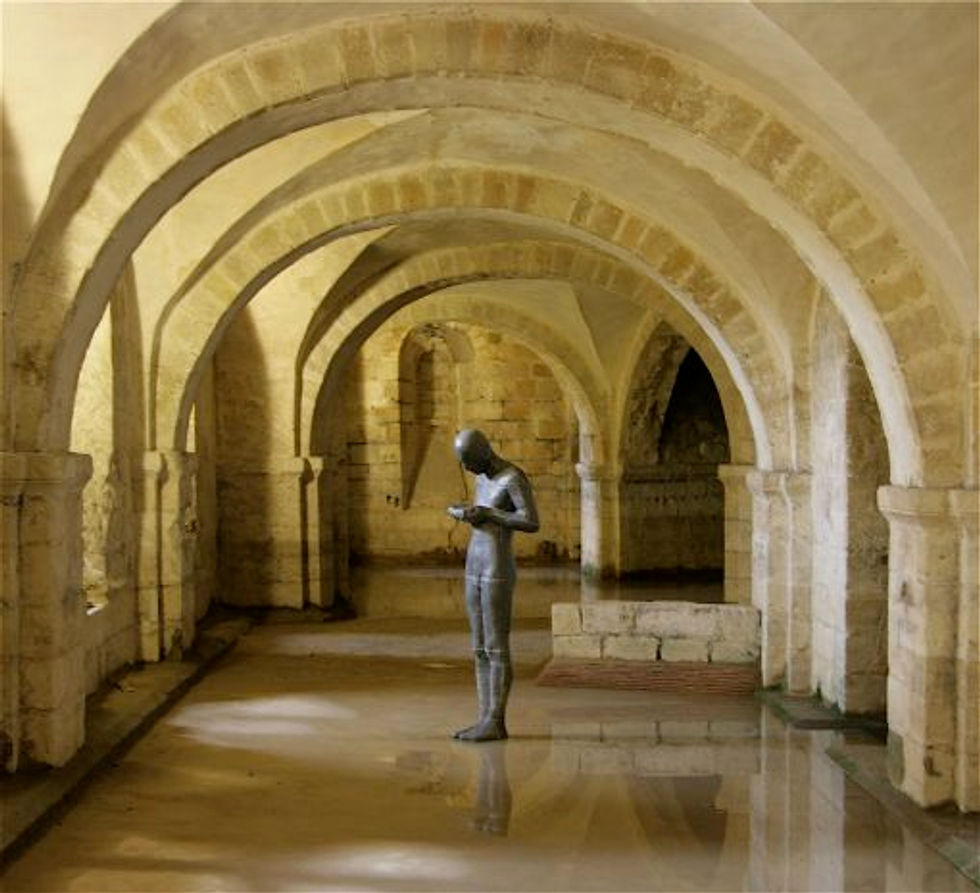Cryptic space
- Paul Dobraszczyk
- Aug 17, 2012
- 3 min read

Entrance to the crypt under Canterbury cathedral
‘The cellar dreamer knows that the walls of the cellar are buried walls …walls that have the entire earth behind them’
-Gaston Bachelard, The Poetics of Space
Underneath the apse of Canterbury cathedral (and in common with most large Christian churches) is the crypt, the oldest part of the building, constructed in the 11th century. In an almost exact reversal of the gem-like Gothic space above ground, the crypt is dark and severe. In one corner, Saint Gabriel’s chapel, constructed at the beginning of the 12th century, is an extraordinary testament to the power of cryptic space. Here, the column capitals are carved into a variety of grotesque forms, some devil-like, others more like mutated animals, as if the unconscious mind has here been given free reign; while above are the remains of a fabulous wall painting of Christ in glory, surrounded by beatific saints and angels. It’s as if two contradictory modes of the imagination – the utopian and dystopian – have been allowed to come together in this space, both being freely expressed but confined to the secretive world of the crypt.

Capital, Saint Gabriel’s chapel, Canterbury cathedral crypt

Wall painting in Saint Gabriel’s chapel
The English words Crypt and cryptic come almost uncorrupted from the Latin world crypta meaning concealed or private; and it’s this sense of the word that holds the key to understanding the potential richness of cryptic space. According to Gaston Bachelard, in his famous meditation The Poetics of Space (1958), domestic underground space (the cellar or vault) is first and foremost the ‘dark entity’ of the house, one that ‘partakes of subterranean forces’. For Bachelard, the underground is the one space the can never be rationalised: because it’s always in the dark, it’s a space that becomes a repository for the unconscious, a force that ‘cannot be civilised’ no matter how much we’d like it to be. Moreover, the unconscious itself is usually imagined in cryptic spatial terms – it’s the secret, concealed part of us, the bearer of hidden meanings.

The crypt under Oxford Castle, together with a re-enactment of the founding of the university

Restaurant in the crypt of St John’s church, Smith Square, London
Cryptic spaces have always been subject to attempts to rationalise their darkness. Crypts are often described as foundational spaces. Indeed, Canterbury’s crypt is said to be the foundation on which the present cathedral was built, while that under the Oxford castle is now quite literally cast as the space in which its world-famous university was founded, with monks offering the first clandestine teaching there over 900 years ago. Visualising the crypt as a ‘foundation’ fixes its otherwise obtuse meaning and transforms it into a mythic space, but one that is nevertheless rooted in its rationalisation. In present-day equivalents, many of London’s church crypts have now been converted into restaurants – St Martin in the Fields, St Mary le Bow, St John’s in Smith Square, to name but a few. Here, the potent mystery of the crypt is reduced to simply a novel spatial experience – a new background to an everyday activity – but perhaps with the element of secrecy still drawing the illicit in the form of hushed, private conversations.

‘Sound II’ in the crypt of Winchester cathedral
Yet, despite the increasing rationalisation of cryptic spaces, they nevertheless have a stubborn hold on the imagination that resists this process. Oxford castle’s crypt is widely perceived as the most haunted space in the city, with regular ghost-hunting tours promising to reveal its occult presences that lie far beyond the rational and reasonable world above ground; while the crypt under Winchester cathedral contains another ghostly presence – not an apparition but Antony Gormley’s striking sculpture Sound II, a life-size cast of the artist’s body contemplating a bowl held in its hands. When the crypt floods, as it often does, the sculpture appears as if hovering over the deep, the figure longing for the bowl to be filled by the rising flood. It’s a simultaneously gentle and disturbing symbolic representation of the imaginative potency of the crypt that, even as it evades comprehension, nevertheless haunts the mind for a long time after it’s seen.



Comments